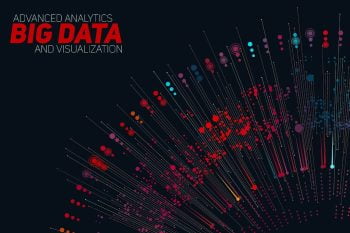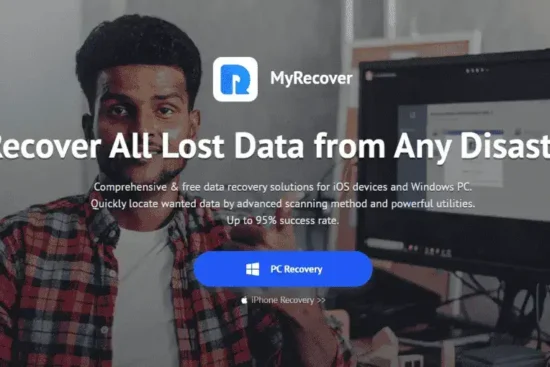
In today’s digital era, big data business has become one of the most valuable assets for organizations. With the massive amount of data generated every day, managing and storing it has become a daunting task. This is where big data comes into play. In this blog post, we will explore how big data is stored and managed in organizations.
What is Big Data?
Big data refers to the vast and complex data sets that cannot be processed by traditional data processing tools. It is characterized by the three Vs – Volume, Velocity, and Variety. Volume refers to the massive amount of data generated, Velocity refers to the speed at which data is generated, and Variety refers to the different types of data generated.
Big data is a compilation of structured, semi-structured, and unstructured data gathered by organizations for use in predictive modeling, machine learning projects, and other advanced analytics applications. Big data systems and tools have become a common part of data management architectures in organizations.
Big data is characterized by three V’s: the large volume of data, the wide variety of data types, and the velocity at which data is generated, collected, and processed. While big data does not correspond to any specific amount of data, it often involves terabytes, petabytes, and even exabytes of data collected and created over time.
Doug Laney first identified these characteristics in 2001, and Gartner popularized them after acquiring Laney’s consulting firm Meta Group in 2005. Additionally, other V’s have been added to different descriptions of big data, including veracity, value, and variability.
How is Big Data Stored?
Big data is typically stored in distributed file systems like Hadoop Distributed File System (HDFS) or Amazon S3. These file systems allow organizations to store massive amounts of data across multiple servers, making it easier to manage and access the data.
HDFS, for example, stores data in a distributed manner across a cluster of servers. The data is divided into smaller blocks and replicated across multiple servers, ensuring data redundancy and fault tolerance. This ensures that data is always available, even if one or more servers fail.
Amazon S3, on the other hand, is a cloud-based storage service that allows organizations to store and retrieve data from anywhere in the world. It is highly scalable and reliable, making it an ideal choice for organizations that deal with massive amounts of data.
How is Big Data Managed?
Managing big data involves several processes, including data ingestion, processing, and analysis. Data ingestion involves collecting and importing data from various sources into the storage system. This can be done using tools like Apache Flume, Kafka, or AWS Data Pipeline.
Once the data is ingested, it needs to be processed and analyzed. This is typically done using tools like Apache Spark or Hadoop MapReduce. These tools allow organizations to process and analyze large amounts of data quickly and efficiently.
Managing Big Data involves a range of activities, including collection, storage, processing, analysis, and visualization. Big Data refers to extremely large data sets that are too complex for traditional data processing tools to manage. Managing Big Data requires specialized tools and techniques to store and process these large data sets effectively.
One key aspect of managing Big Data is data storage. Traditional databases are not capable of handling the volume and variety of data associated with Big Data. Therefore, organizations often use distributed storage systems such as Hadoop Distributed File System (HDFS) or cloud storage solutions to store and manage Big Data.
Another key aspect of managing Big Data is data processing. Organizations use specialized tools and techniques such as MapReduce, Spark, and Apache Storm to process Big Data. These tools enable organizations to extract insights from large data sets in real-time or near real-time.
Data analysis and visualization are also critical components of managing Big Data. Organizations use tools such as Tableau, Power BI, or QlikView to visualize and explore Big Data. These tools enable users to create interactive dashboards and reports that help organizations make informed decisions based on the insights derived from Big Data.
In summary, managing Big Data involves a range of activities, including collection, storage, processing, analysis, and visualization. To manage Big Data effectively, organizations use specialized tools and techniques to store and process large data sets. Data analysis and visualization are also critical components of managing Big Data, as they help organizations derive insights from the data and make informed decisions.
Data analysis involves applying various techniques like data mining, machine learning, and statistical analysis to uncover insights and patterns in the data. This helps organizations make informed decisions and gain a competitive edge in their respective industries.
Importance of Big Data Business:
The importance of big data lies in its ability to provide valuable insights to companies that they can use to enhance operations, provide better customer service, create personalized marketing campaigns, and improve overall profitability.
In the medical industry, big data helps researchers and doctors identify diseases and risk factors, while in the energy industry, it aids oil and gas companies to locate potential drilling locations and track pipeline operations. Similarly, financial services, transportation, and manufacturing companies rely on big data to manage their operations and optimize their supply chains.
Big Data is a powerful tool that is being used by businesses of all sizes to gain insights into customer behavior, market trends, and internal operations. By leveraging Big Data business can make data-driven decisions that help them gain a competitive advantage, improve customer satisfaction, and optimize their operations.
One way that Big Data business, is used in business is for customer analytics. By analyzing customer data, businesses can gain insights into customer preferences and behavior, which can help them optimize their marketing strategies, improve customer experience, and develop new products and services that better meet customer needs.
Big Data Business is also used for operational analytics, which involves analyzing internal data to improve processes, reduce costs, and increase efficiency. By analyzing data from various sources, such as supply chain systems, manufacturing processes, or logistics, businesses can identify areas for improvement and optimize their operations to increase productivity and profitability.
Additionally, Big Data Business, is used for predictive analytics, which involves using machine learning and other techniques to forecast future trends and behaviors. By analyzing data from various sources, businesses can make informed predictions about customer behavior, market trends, and other factors that impact their operations, enabling them to take proactive steps to stay ahead of the competition.
In summary, Big Data is being used by businesses of all sizes to gain insights into customer behavior, market trends, and internal operations. By leveraging Big Data, businesses can make data-driven decisions that help them gain a competitive advantage, improve customer satisfaction, and optimize their operations. Big Data is used for customer analytics, operational analytics, and predictive analytics, enabling businesses to make informed decisions that drive success.
Conclusion
In conclusion, big data business has become an integral part of modern-day organizations. Managing and storing massive amounts of data requires specialized tools and techniques. Distributed file systems like HDFS and cloud-based storage services like Amazon S3 have made it easier for organizations to store and manage big data.
Additionally, tools like Apache Spark and Hadoop MapReduce allow organizations to process and analyze large amounts of data quickly and efficiently, uncovering valuable insights and patterns that can help them make informed decisions.






Leave a Reply
You must be logged in to post a comment.